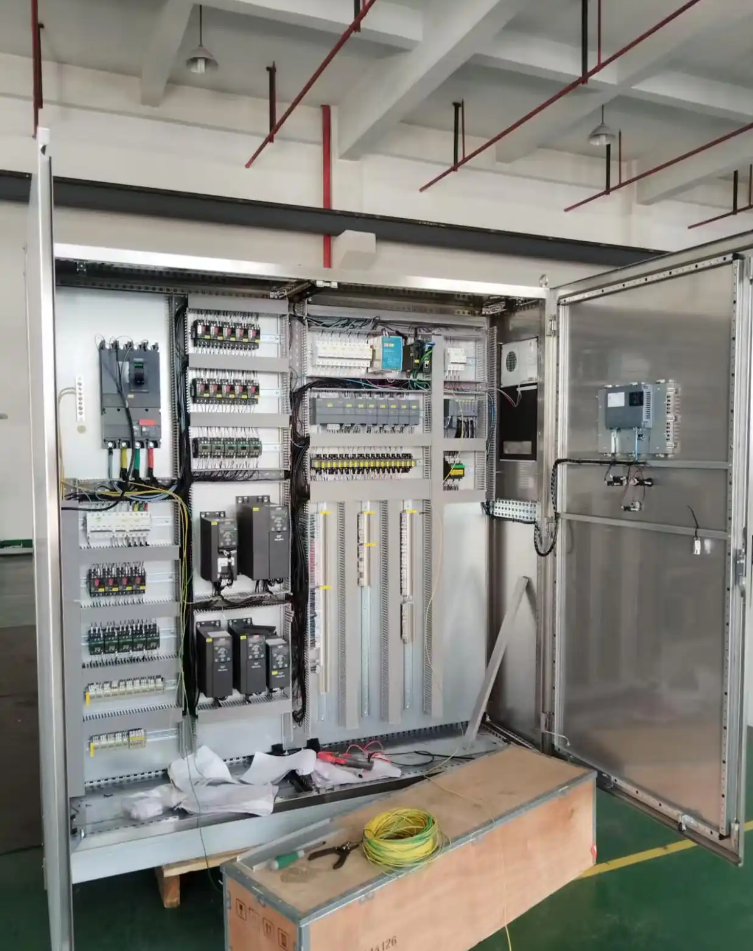Step into any modern factory, whether it’s automobile manufacturing, food packaging, or a chemical production line, and you’ll always find a familiar sight—the blue-gray Siemens PLC running steadily in its control cabinet. It’s like the ubiquitous “nervous system” of industrial automation, controlling the operation of countless devices. So the question arises: why Siemens? Among numerous PLC brands, why does Siemens occupy such a prominent position?
Deep Heritage: Siemens’ First-Mover Advantage and Brand Effect
Siemens launched its first PLC, the SIMATIC S3, as early as 1973, a whole generation ahead of many competitors. Nearly 50 years of technological accumulation has allowed Siemens to build a complete product system—from the S7-1500 series used in large factories to the S7-1200 for small and medium-sized equipment, and then to the S7-200 SMART for micro-automation, covering almost all application scenarios. This “first-mover advantage” cannot be underestimated. As generations of engineers learn Siemens PLCs in school and work with Siemens equipment in the workplace, this inherited habit and trust creates strong brand loyalty. For many, choosing Siemens means choosing “reliability” and “peace of mind.”
Ecosystem: More Than Just Hardware, a Complete Solution Chain
Siemens’ true strength lies in its comprehensive ecosystem. Unified Software Platform: TIA Portal (Total Integrated Automation Portal) is Siemens’ killer software. Engineers can complete all tasks—PLC programming, HMI interface design, drive configuration, etc.—within a single software environment. This high degree of integration significantly improves engineering efficiency. Strong Compatibility: Siemens product lines offer exceptional interoperability. PLCs can seamlessly connect with Siemens inverters, servo drives, HMIs, and other devices, reducing integration difficulty and time costs. Network Communication Capabilities: From the early MPI to Profibus, and now Profinet, Siemens has consistently led the development of industrial networks. Profinet real-time Ethernet technology has become one of the world’s leading industrial communication standards.
Stable and Reliable: A Core Strength in Industrial Environments
Industrial environments are extremely harsh—voltage fluctuations, electromagnetic interference, and high temperatures and humidity are commonplace. Siemens PLCs are renowned for their exceptional stability. Their products undergo rigorous testing and can operate flawlessly for extended periods under harsh conditions. I personally witnessed a Siemens S7-300 PLC operate continuously for over 10 years in the high-temperature, dusty environment of a ceramics factory without any hardware failure. This reliability provides a solid guarantee for continuous production line operation, avoiding production stoppages and losses due to controller malfunctions.
Openness and Innovation: A Technology Leader Moving Forward with the Times
Siemens does not rest on its laurels but continuously embraces new technologies: Digital Twins: Siemens pioneered the maturation of virtual commissioning technology, allowing engineers to test and optimize programs in a virtual environment, significantly reducing on-site commissioning time. Industry 4.0 Ready: The currently launched S7-1500 series PLCs feature a built-in OPC UA interface, providing natural support for the Industrial Internet of Things and smart manufacturing, easily enabling data uploading to the cloud and intelligent analysis. Soft PLC Technology: PC-based soft PLC solutions offer greater possibilities for future flexible manufacturing.
Market Status: The “Matthew Effect” of the Strong Getting Stronger
Currently, Siemens holds approximately 40% of the PLC market share in China, with an even higher share in the high-end market. This market position creates a virtuous cycle: more users → more people learning → more technical personnel → more users choosing Siemens. From an employment perspective, mastering Siemens PLC technology has become an essential skill for many automation positions, which in turn consolidates Siemens’ market position.
Future Outlook: Challenges and Opportunities for Siemens
Of course, Siemens is not without its challenges. Domestic brands such as Delta and Inovance are making rapid progress in the small and medium-sized PLC market, continuously gaining market share with their cost-effectiveness and localized services. Rockwell Automation still dominates the North American market. However, in the foreseeable future, Siemens, with its complete product ecosystem, deep technological accumulation, and large user base, will maintain its leading position in the field of industrial automation control. For automation engineers, proficiency in Siemens PLC technology is undoubtedly a significant asset in their careers.



